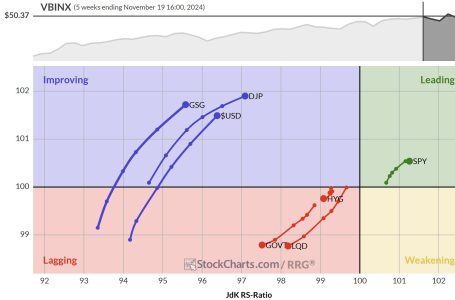Trump team ‘confident’ Senate Republicans will approve cabinet selections
Understanding Email Segmentation: Targeting the Right Audience for Maximum ROI

Email marketing remains one of the most effective tools in the digital marketer’s arsenal. However, its success is no longer measured merely by how many emails are sent or received, but by how well those emails resonate with the audience.
Enter email segmentation—a powerful technique that ensures your message lands in the inbox of the right person at the right time. This article dives deep into email segmentation, its benefits, and actionable strategies for leveraging it to maximize your return on investment (ROI).
What is Email Segmentation?
Email segmentation involves dividing your email list into smaller, more targeted groups based on specific criteria such as demographics, behavior, purchase history, or engagement level. Rather than sending a one-size-fits-all message to your entire audience, segmentation allows you to tailor your content to meet the unique needs and preferences of each group.
For example, instead of sending the same promotional email to both first-time buyers and loyal customers, you can create two separate campaigns. One could introduce new customers to your brand, while the other rewards loyal customers with an exclusive discount.
Why is Email Segmentation Important?
Email segmentation is crucial for crafting campaigns that resonate with your audience. Unlike generic emails, segmented campaigns deliver personalized content tailored to the specific needs and preferences of each subscriber. This relevance leads to higher open rates, improved click-through rates, and stronger conversions.
One major benefit is increased engagement. A well-segmented list allows you to send targeted messages, such as product recommendations based on purchase history or exclusive offers for loyal customers. These tailored experiences build trust and foster deeper relationships with your audience.
Segmentation also reduces unsubscribe rates by ensuring your emails are meaningful and not overwhelming. Additionally, it boosts ROI by focusing your resources on the most promising segments. Leveraging advanced tools in email marketing platforms makes segmentation seamless, helping businesses optimize their campaigns for maximum impact.
Key Criteria for Email Segmentation
To create effective email segments, you need to base them on criteria that align with your business goals and audience behaviors. Here are some of the most popular segmentation strategies:
DemographicsSegment by age, gender, location, income, or occupation. This is particularly useful for businesses with products or services that appeal to specific groups.
Behavioral DataGroup users based on their actions, such as browsing history, purchase frequency, or interaction with past emails. For example, a customer who frequently views a specific product category may appreciate updates on new arrivals in that category.
Purchase HistoryUse past purchases to recommend similar or complementary products. Loyal customers might enjoy early access to sales, while first-time buyers may respond to a discount on their next purchase.
Engagement LevelIdentify active users versus those who haven’t opened an email in months. You can send re-engagement campaigns to dormant subscribers or reward highly engaged ones.
Email PreferencesLet your subscribers choose the type of content they want to receive. For instance, some may prefer weekly updates, while others are only interested in sales promotions.
Lifecycle StageSegment based on where a subscriber is in their customer journey—lead, prospect, first-time buyer, or repeat customer.
Best Practices for Email Segmentation
While segmentation is a powerful tool, it needs to be executed strategically to yield results. Here are some best practices:
Start with Clear GoalsDetermine the purpose of your segmentation. Are you looking to increase engagement, drive sales, or improve retention? Clear goals will guide your efforts.
Leverage Data EffectivelyUse analytics tools to gather insights on your subscribers. The more data you have, the more precise your segments will be.
Use Dynamic ContentDynamic content allows you to tailor parts of your email based on the recipient’s profile without creating multiple campaigns. For instance, you can display different product recommendations depending on user preferences.
Test and OptimizeConduct A/B tests on segmented campaigns to determine which messages resonate most with each audience. Use the results to refine your strategy.
Keep Segments UpdatedRegularly update your segments to reflect changes in customer behavior or preferences. A segment that worked six months ago may no longer be relevant.
Don’t Over-SegmentWhile segmentation is valuable, overdoing it can lead to management challenges. Focus on the most impactful criteria for your business.
Examples of Email Segmentation in Action
Retail IndustryA clothing brand can segment its audience by gender and season. Men receive emails about the latest men’s fashion trends, while women see promotions on women’s apparel.
E-CommerceAn online store can target customers who abandoned their shopping carts with a reminder email offering a discount.
Software as a Service (SaaS)A SaaS company can segment users based on their subscription level (free trial, basic, premium) and send tailored onboarding emails.
Travel IndustryA travel agency can segment by location and past travel preferences. A frequent traveler to Europe may receive updates on discounted European tours, while a beach lover sees promotions for tropical destinations.
Measuring Success: Metrics to Track
The ultimate goal of email segmentation is to improve your campaign’s ROI. To gauge its effectiveness, monitor these metrics:
Open RateIndicates how many recipients opened your email.
Click-Through Rate (CTR)Measures the percentage of recipients who clicked on a link within your email.
Conversion RateTracks how many recipients completed a desired action, such as making a purchase.
Unsubscribe RateHigh unsubscribe rates may indicate that your segmentation needs refinement.
Revenue Per EmailCalculates the direct ROI of your email campaigns.
Email segmentation is no longer a luxury—it’s a necessity in today’s competitive digital landscape. By delivering personalized, relevant content to specific audience groups, you can enhance engagement, build stronger relationships, and ultimately maximize your ROI. Start by understanding your audience, defining clear goals, and leveraging the right tools. As you fine-tune your segmentation strategy, you’ll find that even small adjustments can lead to significant results.
In the end, email segmentation isn’t just about sending emails—it’s about creating meaningful connections with your audience.










